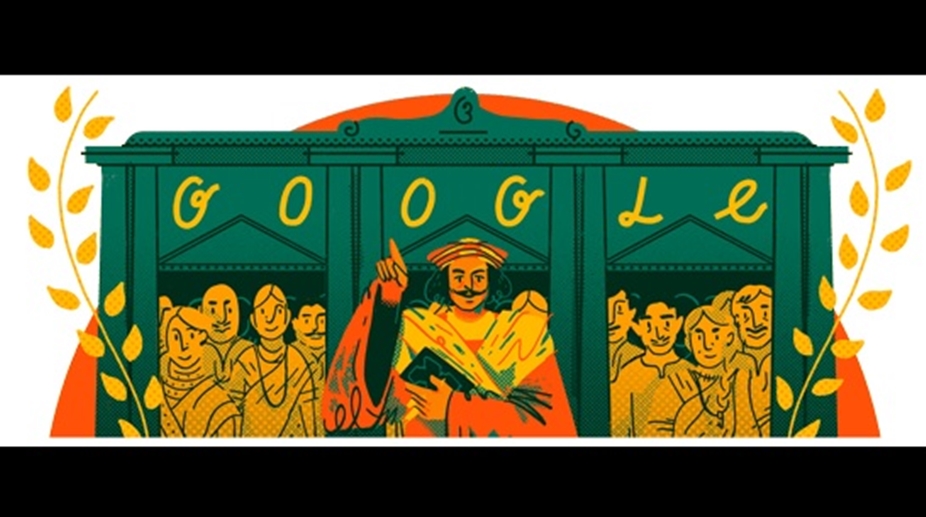UK PM vows to rebuild Britain in new year message
United Kingdom (UK) Prime Minister Keir Starmer on Wednesday pledged to rebuild Britain as his government seeks to turn the tide after a challenging first six months in power.
It’s the 246th birth anniversary of the great social reformer

The doodle has been created by Toronto-based designer Beena Mistry.
It’s the 246th birth anniversary of social reformer Raja Ram Mohan Roy, who championed the cause of women’s rights and fought for a modern India. Today’s Google Doodle remembers the “Father of the Indian Renaissance”, highlighting his contributions to the society.
The doodle has been created by Toronto-based designer Beena Mistry.
Advertisement
Born on May 22, 1772, at Radhanagar village in Murshidabad district of West Bengal, Ram Mohan Roy was a non-conformist and a staunch supporter of monotheism. Son of a Hindu Brahmin, he was always against some orthodox Hindu rituals and idol worship, and went on to establish Brahmo Samaj in 1828.
Advertisement
The Brahmo Samaj, which found many takers in the Bengali society of the early 19th century, is said to be one of the first Indian socio-religious reform movements. Roy founded the Brahmo Samaj along with Maharshi Debendranath Tagore, another great social reformer of his time who was the father of Rabindranath Tagore.
Since childhood, Roy had differences with his father Ramkanto Roy on religion and faith, and he left home due to this at a very young age. He did return home eventually, after extensively travelling the Himalayas and Tibet, and got married, but continued to study Hinduism with an aim to separate its wrongs from the right.
Well versed in Sanskrit, Ram Mohan Roy had explored Upanishads and Vedas, and had translated many Vedic scriptures into English. He had studied Persian and Arabic too, which influenced his belief in monotheism. Roy preached unity of God, and wrote “Tuhfat al-muwahhidin”, which means “A Gift to Monotheism”. It was his first book in which he opposed ritualism.
Roy also studied Tantric works and Jain texts.
At Brahmo Samaj, Ram Mohan Roy had a “three-fold mission”: “As a Hindu reformer, he gave a Unitarian reaction of the Hindu Shastras from the Vedanta and the Mahanirvana Tantra. As a Muslim defender of the faith, he wrote the Tuhfat-Ul-Muwahhiddin and the Monozeautul Adiyan, which were polemical works. And as a Christian, he gave a Unitarian version of the entire body of scriptures, old and new, in his controversies with the Christian Missionaries.”
Roy’s greatest contribution remains his fight to eradicate the regressive practice of “Sati” that took away a widow’s right to live. In those days, a widow was expected to immolate herself on her husband’s pyre. While some did it by own will, many others were forced to. Roy extensively fought against the abolition of the evil practice. Nearly 200 years ago, he also campaigned for a widow’s right to remarry, besides seeking equal rights for women in property.
In 1830, Ram Mohan Roy travelled to the UK to ensure that the Lord William Bentinck’s Bengal Sati Regulation, 1829, which banned the practice of Sati, was not overturned.
He spent the last days of his life in England. Roy died at Stapleton, then a village near Bristol, on 27 September 1833. His death was sudden, due to meningitis. Roy was buried in Arnos Vale Cemetery in southern Bristol. His tomb is looked after by the British authorities and is still visited by Indians and others.
Advertisement